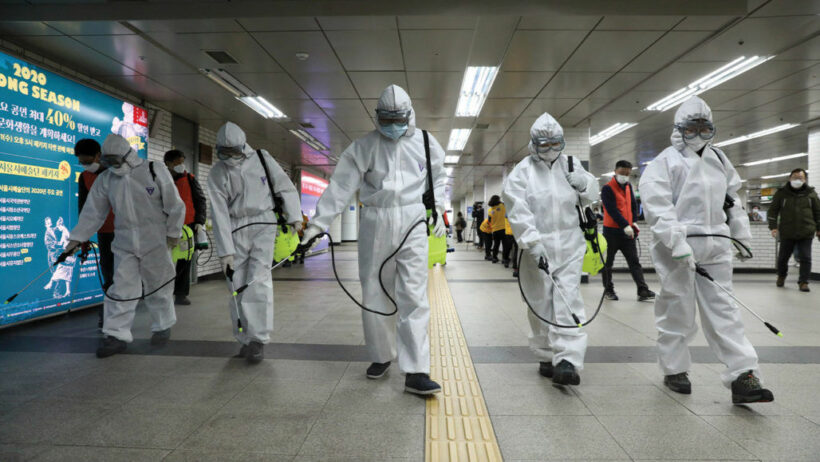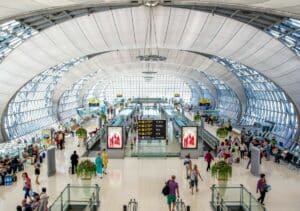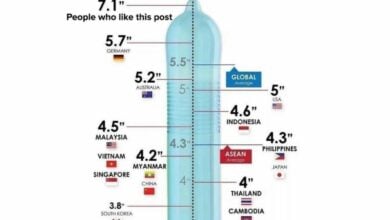When will the world open up again for travel?

OPINION
9 months since the first outbreak in China, international borders remain mostly sealed. Most travellers, excepting certain categories, are prevented from leaving or entering in the majority of countries. The shutters went up in March and April in much of the world, a bit later in some countries, as governments and medical officials figure out how to safely re-open their borders, fearing another surge of Covid-19 within their borders.
Whilst the latest coronavirus has now infected 25,90,750 people worldwide (as of 9am on September 2, Thai time), another 861,251 have succumbed to complications related to Covid-19 as the virus proves to be both more infectious and deadly than seasonal flus.
The “summer surge” in the northern hemisphere, when keyboard warriors opined that the warm weather would reduce the efficiency of the virus to infect people, has turned out to be a furphy. In the US, the southern states of Florida and Texas, also the hottest states, have been the hardest hit with new infections over the past three months of summer.
In Thailand, the government closed the borders in early April and have kept things sealed up ever since, re-opening for a select few, along with 1000s of repatriates – all have to complete a mandatory 14 day state-controlled quarantine.
The Thai government, like governments around the world, have become very risk-averse. Although treatments have improved for Covid-19 patients, the death rate for people who are infected remains uncomfortably high and many of the patients report persistent long-term symptoms as a result of their bout with the disease.
Governments are also weighing up the protection of their citizens with the economic realities. Lockdowns, globally, have plunged countries into recession. Now the word “depression” is openly being used to describe the parlous health of the world economy. And the worst of the economic damage is yet to come as peoples’ savings dwindle and the earlier government stimulus finishes.
In the US, the strongest economy in the world, a dangerous disparity has emerged between Wall Street and Main Street with a surging stock and bonds market, but record unemployment, bankruptcies, store closures and evictions facing the average American. Pundits are predicting a major correction which could set off a chain reaction of similar corrections around the world and deterioration of the almighty USD. The US Federal Bank, aka. The Fed, has been printing imaginary digital currency and buying up stocks and bonds to artificially keep confidence in the stock market bubbling along. Someone has to pay for all that debt somewhere down the track.
But, back to the borders…
The US-Canada border, the world’s longest undefended boundary, has been shut to all nonessential travel since March. Land border crossings are down 97% compared to last year. In addition to its land border restrictions with Canada and Mexico, the US remains closed to travel from China, Brazil, the UK, the EU and Ireland.
In Europe, including the 26 members of the Schengen Area where passports are not needed to cross into fellow-European countries, borders were close in March. Some then re-opened for summer travel but have, in some cases, begun to shut them down again.
Britain announced a 14 day quarantine requirement for all visitors from France at the start of August. This week France reciprocated. Spain has had another surge in July and August after earlier containing the virus. Spain was one the hardest hit countries in the world, early on in the pandemic.
Norway has imposed a similar requirement for visitors from Spain and 8 other European countries. The EU is recommending its members reopen to countries deemed “epidemiologically safe” or “risk free” – China, Japan, and South Korea, but keep the borders closed to most others, including the US.
Some EU member states, like Poland and Hungary are refusing to reopen to any other countries at all.
China, which has been closed to most foreign visitors since March 28, has partially reopened to a few Europeans who hold Chinese residence or a valid work permit, but otherwise keeps its borders sealed.
All this sealing up and border protection has also seen a resurgence of nationalism – keep us safe and foreigners out!
The solution, for a lot of governments, is that the best way for countries to protect themselves against Covid-19, is to keep foreigners out and reduce their reliance on foreign imports.
In the US, the Trump administration has used the coronavirus pandemic as a cover to shutdown all asylum claims at the borders, immigration processing, and prevent most foreign workers from crossing the borders. The rhetoric plays into the far right of politics providing emotional reasoning to keep those pesky foreigners out of their country and the borders sealed. There has been cases, almost everywhere, where nativism rises to the top in plenty of social media clips, where spiteful middle class citizens turn feral and anti-foreigner. Behold the rise of Karen! Whilst borders remain closed, xenophobia simmers.
There has been enough of that in Thailand too. Without revisiting any of the nastier examples, at least one leading politician hasn’t helped the situation with his attacks on “dirty farang”.
In a world that had become increasingly connected, and supply chains relied heavily on cross border co-operation for an interconnected world economy, the pandemic has changed everything. And governments are simply struggling trying to find out new ways to keep their economies bubbling along whilst also doing their best to battle a new virus.
Airline travel had never been so popular as it was in the months before Covid-19 first broke out in China. Now the world’s aviation market has seen a 97% drop in traffic. The US administration has turned on China, previously its major trading partner, with a promise to lock it out of manufacturing supply chains – a promise impossible to keep.
The one thing that remains mostly open is the internet, connecting people across borders even when they’re mostly closed. So at least we can still share stories and ideas as the world struggles into the next phase of this pandemic.
Take yourself back to March and April when we all thought this would be over “soon” and things will be back to normal “in a couple of months”. How wrong we were. 9 months in and there are more borders being closed than opened and the best we can hope for in the world of travel is a virtual tour on YouTube or a staycation inside our own borders.
PS. The greatest pandemic in recent history was called the Spanish Flu (even though it originated in the US). SARS and MERS, also deadly coronaviruses, ended up with dull acronyms. A few other pandemics of the 20th century didn’t even get a name. How will history describe this pandemic? Covid-19, the 2019 Pandemic, The Great Pandemic?
Tell us on our Facebook page. Not following us on Facebook? Just click ‘FOLLOW’ and we’ll keep you informed.
Latest Thailand News
Leave a Reply
You must be logged in to post a comment.
































